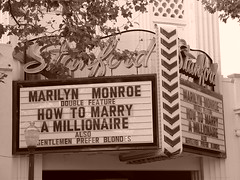Certain properties are core to social media in a combination that alters how people engage with one another. I want to discuss five properties of social media and three dynamics. These are the crux of what makes the phenomena we’re seeing so different from unmediated phenomena.
A great deal of sociality is about engaging with publics, but we take for granted certain structural aspects of those publics. Certain properties are core to social media in a combination that alters how people engage with one another. I want to discuss five properties of social media and three dynamics. These are the crux of what makes the phenomena we’re seeing so different from unmediated phenomena.
1. Persistence. What you say sticks around. This is great for asynchronicity, not so great when everything you’ve ever said has gone down on your permanent record. …
2. Replicability. You can copy and paste a conversation from one medium to another, adding to the persistent nature of it. This is great for being able to share information, but it is also at the crux of rumor-spreading. Worse: while you can replicate a conversation, it’s much easier to alter what’s been said than to confirm that it’s an accurate portrayal of the original conversation.
3. Searchability. My mother would’ve loved to scream search into the air and figure out where I’d run off with friends. She couldn’t; I’m quite thankful. But with social media, it’s quite easy to track someone down or to find someone as a result of searching for content. Search changes the landscape, making information available at our fingertips. This is great in some circumstances, but when trying to avoid those who hold power over you, it may be less than ideal.
4. Scalability. Social media scales things in new ways. Conversations that were intended for just a friend or two might spiral out of control and scale to the entire school or, if it is especially embarrassing, the whole world. …
5. (de)locatability. With the mobile, you are dislocated from any particular point in space, but at the same time, location-based technologies make location much more relevant. This paradox means that we are simultaneously more and less connected to physical space.
Those five properties are intertwined, but their implications have to do with the ways in which they alter social dynamics. Let’s look at three different dynamics that have been reconfigured as a result of social media.
1. Invisible Audiences. We are used to being able to assess the people around us when we’re speaking. We adjust what we’re saying to account for the audience. Social media introduces all sorts of invisible audiences. There are lurkers who are present at the moment but whom we cannot see, but there are also visitors who access our content at a later date or in a different environment than where we first produced them. As a result, we are having to present ourselves and communicate without fully understanding the potential or actual audience. The potential invisible audiences can be stifling. Of course, there’s plenty of room to put your head in the sand and pretend like those people don’t really exist.
2. Collapsed Contexts. Connected to this is the collapsing of contexts. In choosing what to say when, we account for both the audience and the context more generally. Some behaviors are appropriate in one context but not another, in front of one audience but not others. Social media brings all of these contexts crashing into one another and it’s often difficult to figure out what’s appropriate, let alone what can be understood.
3. Blurring of Public and Private. Finally, there’s the blurring of public and private. These distinctions are normally structured around audience and context with certain places or conversations being “public” or “private.” These distinctions are much harder to manage when you have to contend with the shifts in how the environment is organized.
All of this means that we’re forced to contend with a society in which things are being truly reconfigured. So what does this mean? As we are already starting to see, this creates all new questions about context and privacy, about our relationship to space and to the people around us.
